-
 Bitcoin
Bitcoin $119300
2.40% -
 Ethereum
Ethereum $4254
-0.20% -
 XRP
XRP $3.184
-1.38% -
 Tether USDt
Tether USDt $1.000
0.00% -
 BNB
BNB $803.9
0.58% -
 Solana
Solana $183.1
1.50% -
 USDC
USDC $0.0000
0.01% -
 Dogecoin
Dogecoin $0.2339
-2.87% -
 TRON
TRON $0.3384
0.88% -
 Cardano
Cardano $0.8018
-0.29% -
 Hyperliquid
Hyperliquid $45.13
3.14% -
 Chainlink
Chainlink $22.10
0.96% -
 Stellar
Stellar $0.4439
-0.94% -
 Sui
Sui $3.875
-0.73% -
 Bitcoin Cash
Bitcoin Cash $570.7
0.24% -
 Hedera
Hedera $0.2589
-2.90% -
 Ethena USDe
Ethena USDe $1.001
-0.01% -
 Avalanche
Avalanche $23.83
-1.73% -
 Litecoin
Litecoin $123.8
2.61% -
 Toncoin
Toncoin $3.351
-1.13% -
 UNUS SED LEO
UNUS SED LEO $9.103
1.13% -
 Shiba Inu
Shiba Inu $0.00001356
-1.40% -
 Uniswap
Uniswap $10.93
-0.19% -
 Polkadot
Polkadot $4.057
-1.97% -
 Dai
Dai $1.000
0.01% -
 Cronos
Cronos $0.1646
4.66% -
 Ethena
Ethena $0.7974
8.11% -
 Pepe
Pepe $0.00001208
-2.89% -
 Bitget Token
Bitget Token $4.445
-1.70% -
 Monero
Monero $268.8
-2.00%
Does USDT support cross-chain transfers?
USDT's cross-chain transfers, facilitated by bridges, offer flexibility but require careful consideration of security and fees. Various methods exist, each with differing speeds and complexities, demanding thorough research before initiating a transfer.
Mar 15, 2025 at 03:10 pm
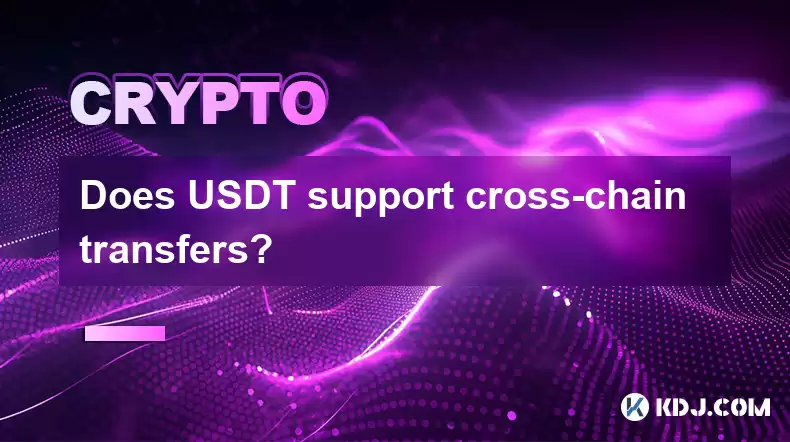
Key Points:
- USDT, a prominent stablecoin, is issued on multiple blockchains.
- Cross-chain transfers of USDT are possible, but the process varies depending on the source and destination chains.
- Different methods exist for cross-chain transfers, each with its own advantages and disadvantages.
- Security and fees are crucial considerations when transferring USDT across chains.
- Understanding the specific requirements of each bridge or protocol is vital for a successful transfer.
Does USDT Support Cross-Chain Transfers?
Yes, USDT, Tether's flagship stablecoin, supports cross-chain transfers. However, it's not a simple, single-click process like transferring within a single blockchain. Because USDT exists on numerous blockchains (Ethereum, Tron, Solana, etc.), moving it between them requires utilizing bridging technology. These bridges act as intermediaries, facilitating the transfer of USDT tokens from one blockchain to another. The complexity and efficiency of this process depend heavily on the chosen bridge and the specific blockchains involved.
The concept of cross-chain transfers is critical in the cryptocurrency space. It allows users to move assets between different blockchain networks, increasing interoperability and expanding the possibilities for DeFi applications and transactions. For USDT, this is particularly important given its widespread use across diverse blockchain ecosystems.
Methods for Cross-Chain USDT Transfers:
Several methods facilitate cross-chain USDT transfers. Each method has its own set of pros and cons concerning speed, cost, and security. Understanding these nuances is crucial before initiating a transfer.
- Centralized Exchanges: Many major cryptocurrency exchanges support USDT deposits and withdrawals across multiple networks. You can deposit USDT on one blockchain, then withdraw it to another supported blockchain. This method is generally user-friendly but may involve higher fees compared to decentralized options. Security relies on the exchange's infrastructure and reputation.
- Decentralized Bridges: These bridges utilize smart contracts to lock USDT on the source chain and mint equivalent USDT on the destination chain. Examples include Wormhole, Allbridge, and ChainPort. Decentralized bridges offer greater transparency and potentially lower fees, but they can be more complex to use and might have security vulnerabilities if not properly audited.
- Wrapped USDT: Some projects create wrapped versions of USDT on different blockchains. These wrapped tokens represent the original USDT held in reserve on another chain. Users can exchange these wrapped tokens for native USDT on the target blockchain. The security of these wrapped tokens depends entirely on the trustworthiness and security measures of the wrapping protocol.
Security Considerations:
Security is paramount when undertaking cross-chain transfers. When using centralized exchanges, the security of your funds depends on the exchange's robustness against hacks and exploits. With decentralized bridges, thorough audits of the smart contracts are crucial to ensure their security and prevent potential exploits. Always verify the legitimacy of the bridge or exchange you are using to avoid scams. Never share your private keys with anyone.
Fee Structures:
Transaction fees vary considerably depending on the chosen method and the current network congestion. Centralized exchanges typically charge a higher fee, but the process is usually smoother and more straightforward. Decentralized bridges tend to have lower fees but can be slower due to network latency. Gas fees on the source and destination blockchains also contribute to the overall cost. Always check the estimated fees before initiating a transfer to avoid unexpected costs.
Step-by-Step Guide (Example using a Decentralized Bridge):
This is a generalized example; specific steps will vary based on the chosen bridge.
- Choose a Decentralized Bridge: Research and select a reputable decentralized bridge that supports USDT transfers between your desired blockchains.
- Connect Your Wallet: Connect your cryptocurrency wallet containing the USDT you wish to transfer to the bridge's interface.
- Select Source and Destination Chains: Specify the source and destination blockchains for your USDT transfer.
- Enter Amount: Input the amount of USDT you want to transfer.
- Confirm Transaction: Review the transaction details, including fees, and confirm the transfer.
- Wait for Completion: The transfer process can take time depending on network congestion. Monitor the transaction status on the bridge's interface.
Common Questions:
Q: Is it safe to transfer USDT across different blockchains?
A: The safety depends on the method chosen. Centralized exchanges introduce counterparty risk, while decentralized bridges carry smart contract risks. Thorough research and due diligence are essential.
Q: What are the fees involved in cross-chain USDT transfers?
A: Fees vary depending on the method (centralized exchange vs. decentralized bridge), network congestion, and the specific bridge used. Expect to pay gas fees on both the sending and receiving blockchains.
Q: How long does a cross-chain USDT transfer take?
A: Transfer times are variable, ranging from a few minutes to several hours, influenced by network congestion and the chosen method. Decentralized bridges often take longer than centralized exchanges.
Q: What if something goes wrong during the transfer?
A: Contact the support team of the exchange or bridge you are using. For decentralized bridges, carefully examine the transaction details to identify potential issues. If you are using a centralized exchange, they should be able to help trace and resolve the problem. Note that in some cases, especially with decentralized bridges, there is limited recourse if the transaction fails.
Q: Are there any limitations on the amount of USDT I can transfer?
A: Yes, there may be limitations imposed by the exchange or bridge you use. These limits are usually in place to manage risk and prevent large-scale exploits. Check the specific limits on the platform you choose before initiating a large transfer.
Disclaimer:info@kdj.com
The information provided is not trading advice. kdj.com does not assume any responsibility for any investments made based on the information provided in this article. Cryptocurrencies are highly volatile and it is highly recommended that you invest with caution after thorough research!
If you believe that the content used on this website infringes your copyright, please contact us immediately (info@kdj.com) and we will delete it promptly.
- BlockDAG's T6900 Crypto Presale Buzz: Is the $0.0016 Entry the Real Deal?
- 2025-08-11 09:08:47
- Animoca Brands' Cool Cats Investment: A Purr-fect Match for the NFT Future
- 2025-08-11 09:08:47
- XRP, Luminite Wallet, and DeFi Access: A New Era?
- 2025-08-11 09:08:47
- Dogecoin, SHIB Whales, and Meme Coins: What's the Latest?
- 2025-08-11 09:08:47
- Bitcoin's Wild Ride: Short Squeezes, $120K Dreams, and What It All Means
- 2025-08-11 09:08:48
- Crypto Treasury, Capital Shift, and Startup Raises: What's the Deal?
- 2025-08-11 09:08:48
Related knowledge
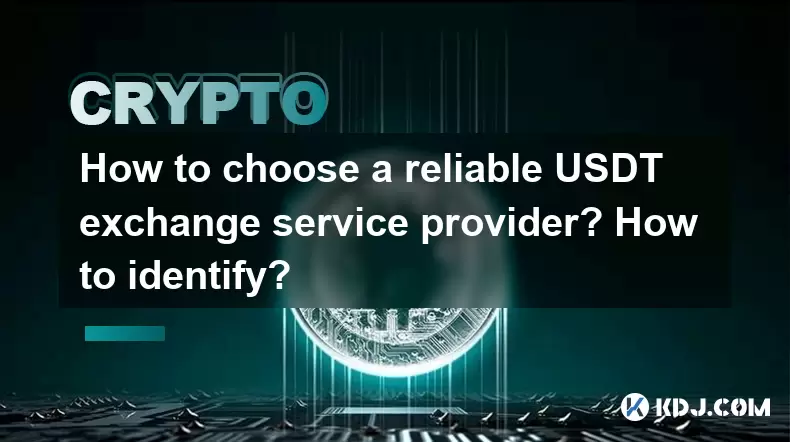
How to choose a reliable USDT exchange service provider? How to identify?
Jun 12,2025 at 03:15pm
Understanding the Role of USDT in Cryptocurrency TradingUSDT (Tether) is one of the most widely used stablecoins in the cryptocurrency market. It is d...
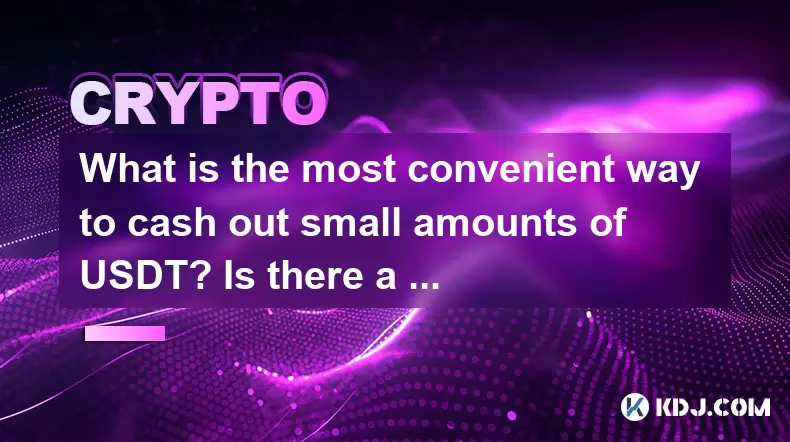
What is the most convenient way to cash out small amounts of USDT? Is there a shortcut?
Jun 11,2025 at 11:00pm
Understanding the Need to Cash Out Small USDT AmountsCashing out small amounts of USDT can be a challenge for many crypto users. Traditional methods o...
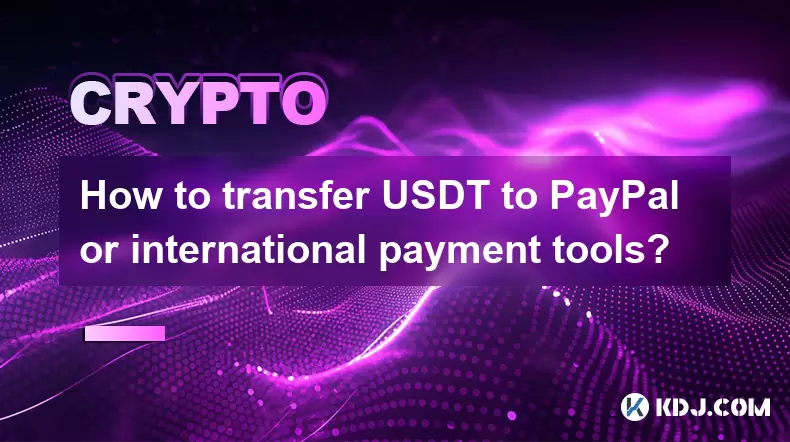
How to transfer USDT to PayPal or international payment tools?
Jun 15,2025 at 05:28am
Understanding the Basics of USDT and PayPal IntegrationUSDT (Tether) is a stablecoin pegged to the US dollar, offering blockchain-based value transfer...
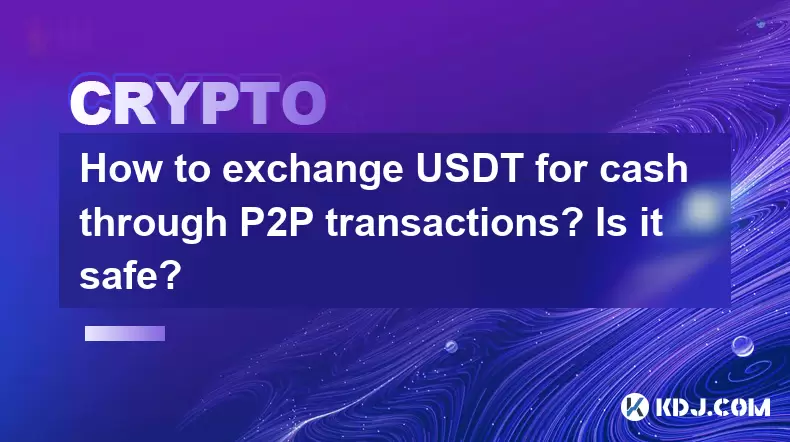
How to exchange USDT for cash through P2P transactions? Is it safe?
Jun 18,2025 at 07:56am
Understanding USDT and P2P TransactionsTether (USDT) is a stablecoin pegged to the value of the US dollar, making it a popular choice for users who wa...
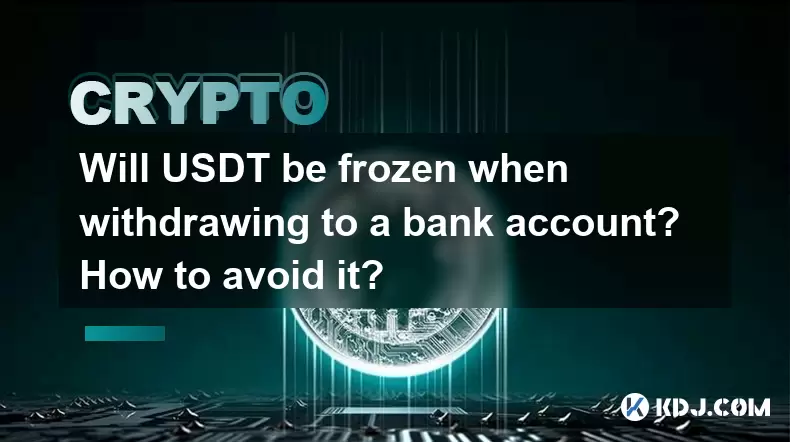
Will USDT be frozen when withdrawing to a bank account? How to avoid it?
Jun 15,2025 at 10:03am
Understanding USDT Withdrawals and Bank Account Freezing RisksWhen users decide to withdraw USDT (Tether) to a bank account, one of the most common co...

How to avoid risks when exchanging USDT for cash? What are the pitfalls?
Jun 11,2025 at 08:14pm
Understanding the Risks of Exchanging USDT for CashWhen exchanging USDT (Tether) for cash, users must be aware of the potential risks involved. As a s...

How to choose a reliable USDT exchange service provider? How to identify?
Jun 12,2025 at 03:15pm
Understanding the Role of USDT in Cryptocurrency TradingUSDT (Tether) is one of the most widely used stablecoins in the cryptocurrency market. It is d...

What is the most convenient way to cash out small amounts of USDT? Is there a shortcut?
Jun 11,2025 at 11:00pm
Understanding the Need to Cash Out Small USDT AmountsCashing out small amounts of USDT can be a challenge for many crypto users. Traditional methods o...

How to transfer USDT to PayPal or international payment tools?
Jun 15,2025 at 05:28am
Understanding the Basics of USDT and PayPal IntegrationUSDT (Tether) is a stablecoin pegged to the US dollar, offering blockchain-based value transfer...

How to exchange USDT for cash through P2P transactions? Is it safe?
Jun 18,2025 at 07:56am
Understanding USDT and P2P TransactionsTether (USDT) is a stablecoin pegged to the value of the US dollar, making it a popular choice for users who wa...

Will USDT be frozen when withdrawing to a bank account? How to avoid it?
Jun 15,2025 at 10:03am
Understanding USDT Withdrawals and Bank Account Freezing RisksWhen users decide to withdraw USDT (Tether) to a bank account, one of the most common co...

How to avoid risks when exchanging USDT for cash? What are the pitfalls?
Jun 11,2025 at 08:14pm
Understanding the Risks of Exchanging USDT for CashWhen exchanging USDT (Tether) for cash, users must be aware of the potential risks involved. As a s...
See all articles

























































































